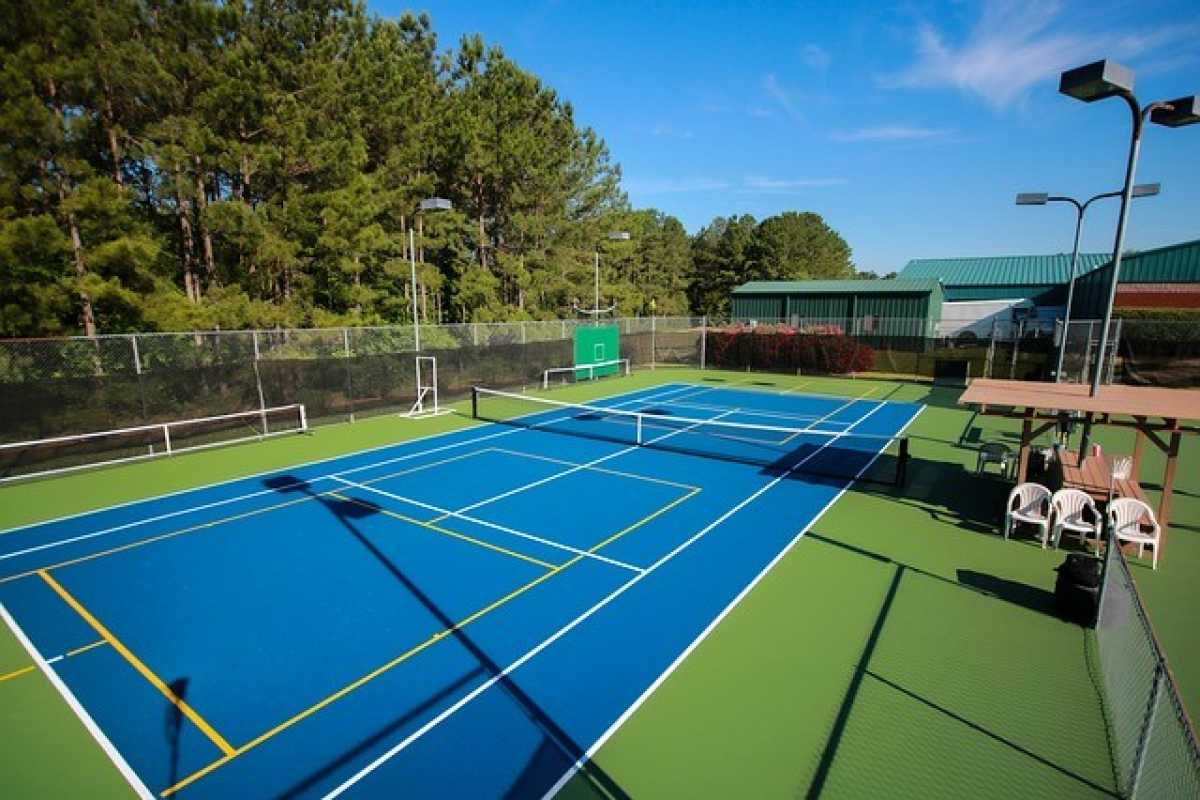Why More People Have Been Playing Pickleball Lately

This articles gives readers insight on why people have been enjoying pickleball lately.
Pickleball, a sport that blends elements of tennis, badminton, and ping-pong, has seen a remarkable surge in popularity. Originally invented in 1965, it has evolved from a backyard pastime to a widely recognized sport. Its simplicity and accessibility have attracted players of all ages and skill levels. Communities and fitness centers are increasingly incorporating pickleball courts, further fueling its growth. This article explores the reasons behind the rising interest in pickleball and its impact on recreational sports.
The Rise of Pickleball: A Brief History
Pickleball's origins trace back to 1965 on Bainbridge Island, Washington. It was created by three friends seeking a family-friendly game. Combining elements from tennis, badminton, and ping-pong, they crafted a unique sport. Initially played on a badminton-sized court with wooden paddles and a perforated plastic ball, it was accessible and fun. The name "pickleball" has a debated origin, with one theory attributing it to the creators' dog, Pickles.
The sport gradually gained popularity, spreading across the United States. By the 1970s, it was recognized as an official sport with formalized rules. The 1980s saw the establishment of the USA Pickleball Association (USAPA), further legitimizing the sport. Today, pickleball is played globally, with millions enjoying its simplicity and camaraderie. Its growth is a testament to its appeal across generations and skill levels.
Social and Health Benefits: Why Pickleball Appeals to All Ages
Pickleball offers a unique blend of social interaction and physical activity. It's a sport that fosters community, making it a favorite for all ages. Players often form lasting friendships, enhancing their social well-being. The game's slower pace compared to tennis makes it accessible to a wider range of skill levels. This inclusivity encourages families and friends to play together, bridging generational gaps.
From a health perspective, pickleball provides a moderate-intensity workout. It improves cardiovascular health, agility, and balance. Regular play can help maintain a healthy weight and reduce the risk of chronic diseases. The sport's low-impact nature makes it safe for older adults, promoting active aging. Engaging in pickleball can also boost mental health, offering stress relief and a sense of accomplishment.
Accessibility and Low Cost: Making the Sport More Inclusive
One of the key factors driving pickleball's popularity is its accessibility. The sport can be played on any flat surface, from driveways to dedicated courts. This versatility allows people from various backgrounds to enjoy the game. Additionally, the equipment required, such as pickleball paddles and balls, is relatively inexpensive. This low cost of entry makes it an attractive option for individuals and community centers.
Moreover, pickleball's simple rules and easy-to-learn gameplay make it inclusive for beginners and seasoned athletes alike. The sport's adaptability to smaller spaces has led to its integration into schools, parks, and retirement communities. This widespread availability ensures that people of all ages and skill levels can participate. The sense of community and belonging fostered by pickleball is one of its most appealing aspects. Its growth in various settings reflects its ability to bring people together, emphasizing the importance of accessible and inclusive recreational activities.
The Role of Technology and Media in Spreading the World
Technology and media have played a significant role in the proliferation of pickleball. Social media platforms, in particular, have been instrumental in showcasing the sport's fun and social aspects. Videos of pickleball games and tutorials have garnered millions of views, attracting new players. Online communities and forums have also provided a space for enthusiasts to share tips and organize events. The ease of accessing information about pickleball online has lowered barriers to entry for potential players.
In addition to social media, mainstream media coverage has brought pickleball to a wider audience. News outlets and sports channels have featured stories about the sport's growth and its positive impact on communities. This increased visibility has led to more people discovering and trying pickleball, further fueling its popularity. The synergy between technology, media, and pickleball has created a virtuous cycle of awareness and participation. As a result, the sport's reach continues to expand, attracting diverse groups of players and spectators.
The Future of Pickleball: Continuing to Grow and Thrive
As pickleball continues to captivate people worldwide, its future looks promising. The sport's blend of accessibility, social interaction, and health benefits makes it a standout choice. With ongoing support and promotion, pickleball's popularity is set to soar even higher. It's a testament to the power of inclusive, enjoyable sports in bringing communities together. The pickleball craze is not just a trend but a lasting addition to the world of recreational activities.

